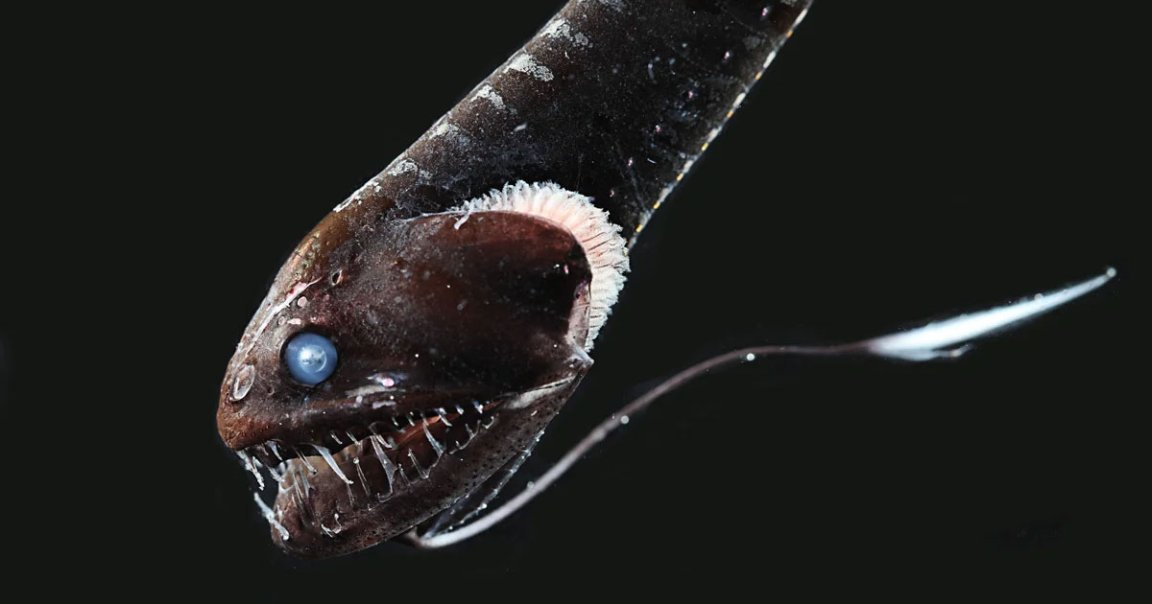
A team of marine biologists have discovered 16 new species of terrifying deep-sea fish that reflect almost no light at all, Wired reports — much like the ultra-black material Vantablack.
Marine biologist Karen Osborn was astonished when she attempted to take pictures of a fangtooth, a terrifying fanged monster of the deep sea, for cataloguing reasons. The fish appeared to absorb almost all of the light her underwater studio shone at it, leaving only eerie silhouettes.

“I had tried to take pictures of deep-sea fish before and got nothing but these really horrible pictures, where you can’t see any detail,” Osborn, who co-authored a paper about the fish published in Current Biology, told Wired. “How is it that I can shine two strobe lights at them and all that light just disappears?”
“It’s like looking at a black hole,” lead author Alexander Davis, a Duke University biologist, told The New York Times.
Some of the newly discovered species are so dark that they absorb 99.956 percent of light that hits it. For context, last year MIT engineers claimed they accidentally created the darkest material that absorbs 99.995 percent of incoming light — 10 times darker than Vantablack, an extremely dark and difficult to produce carbon nanotube material designed by British nanotech company Surrey Nanosystems.
“We had no idea that there were any fishes at all that were ultra-black,” Davis told Wired. “As far as we knew, the only vertebrates that were ultra-black at all were these birds-of-paradise and a couple other bird species.”
“It was the first case we have of something this black really being used as camouflage as well,” he added.

Deep sea oceans are actually much brighter than you might think. There may be little or no natural light penetrating hundreds of meters of ocean water, but bioluminescent creatures and bacteria produce plenty of light all by themselves.
At the same time, light produced by these organisms tends to draw the attention of prey, suggesting the ultra-black fish may be camouflaging themselves to stop them from being detected as they stalk their prey — or hide from other predators.
So how do these fish get so dark? Special layers of melanosomes, tiny cellular structures stuffed with melanin — the same natural pigment that colors human skin — scatter incoming photons and stop them from finding their way back out.
One species, the threadfin dragonfish, was even found to only be ultra-black when its young — likely a defense mechanism to protect it when it needs to hide from predators.
Other species had melanosomes lining their guts to make sure any bioluminescent fish they ate won’t give away their position. “You don’t want to be swimming around with a glowing belly, right?” Osborne told Wired. “That’s just asking for trouble.”
So will we be able to make our own deep sea fish-inspired Vantablack coating? According to Davis, you’d need to be able to make the nanoparticles just the right size and shape, “then you should be able to just coat anything with it,” as he explained to Wired.
READ MORE: Vantablack? Meh. Meet the Ultra-Black Vantafish [Wired]
More on Vantablack: This Vantablack Watch Costs $75,000